- Learning time
- 30 minutes
- First play time
- 80 minutes
The Road to Canterbury
Designed by: Alf Seegert
Inspired by the tales of Chaucer, The Road to Canterbury sees pilgrims making their journey from Greenwich to Canterbury, whilst you the players play con-men – out to extort them for everything they’ve got!
The boards are placed centrally; one showing the pilgrims, the road and the Circle of Sin (more on that in a moment) with the parson on it (more on him in a moment too) and another the display of the various cards that drive the game: sin cards, pardon cards and relic cards. As the pilgrims travel along the road the players keep them company, selling fake pardons for their transgressions. To be sure you make any money, you also need to tempt them to sin in the first place. You keep track of your dastardly exploits using corruption cubes, of which you’ll have a bunch of in your own particular colour.
There are three pilgrims traveling at any given time. Each player begins with five sin cards, and on your turn you can tempt any one of the company to sin. Because they are pathetically weak, they always succumb, and when they do you can add a corruption cube of your colour to the matching sin on the circle of sin to show how dastardly you are – the point of this is that the first player to tempt the various pilgrims into all seven of the deadly sins gets a reward of 20 coins. The second player only gets 10, and the third player 5.
But obviously, you want to pardon the sins too, as that’s where you make your money in the meantime. So at the end of your turn, when you replenish your hand back up to five cards, you can forego another sin card in favour of a pardon card. And on a subsequent turn, you can choose to pardon any of the pilgrims for their transgressions, as long as your pardon card matches at least one of their sins. How many of the matching sins you pardon dictates how much you make on the deal; because you count up the amount of matching sins, plus the parson if appropriate (he spirals around the circle of sin, preaching, and if you forgive the sin he’s currently fixated on, there’s extra money in it for you) and square the total: that’s your cash reward. You also get to put a corruption cube on that pilgrim to show your part in their fall from grace.
If you play the seventh sin to any one pilgrim then they die at the end of your turn. At this point the player with the most corruption cubes gets a reward; placing one of their cubes on the road board and getting a windfall in return – these get bigger the closer you get to Canterbury. They also take a Last Rites token which they can add to their score at the end (3 coins), or cash in for an extra turn.
Finally there are Relic cards to be had that do all kinds of things, but you never know which Relic card you’re going to pick up, so they can represent a gamble. There are also Death cards mixed into the sin deck that expedite sins (potentially deaths) unexpectedly by being added to the Pilgrims and representing their ‘preferred’ sin – each Pilgrim has one.
As soon as the fifth pilgrim dies (filling the Canterbury space on the road) the game is over. The player with the majority of corruption cubes on the road itself gets a bonus, and the players with majorities of corruption on the two pilgrims left alive also get cash rewards. The game sets out to mock corruption rather than religion, and the whole thing does seem like a celebration of screwing people over, complete with artwork by Hieronymus Bosch!
The guru's verdict
-
Take That!
Take That!
Plenty of room for Take That on the road to Canterbury - you can beat someone to a juicy pardon, or even kill a pilgrim off before they can be theoretically forgiven. Keeping an eye on what cards people are picking up comes in handy!
-
Fidget Factor!
Fidget Factor!
Very low after that first play. A two-player game only takes half an hour if you know the rules.
-
Brain Burn!
Brain Burn!
Moderate. You need to calculate how the cards in your hand potentially affect each Pilgrim and the best time to play them. You ideally want to have a rough idea what your opponent is up to as well...
-
Again Again!
Again Again!
The Sin, Pardon and Relic cards all come out randomly, as do the Pilgrims themselves, who each have a 'preferred' sin. If you like a spicy game that's not too heavy on the rules, The Road to Canterbury ticks those boxes.

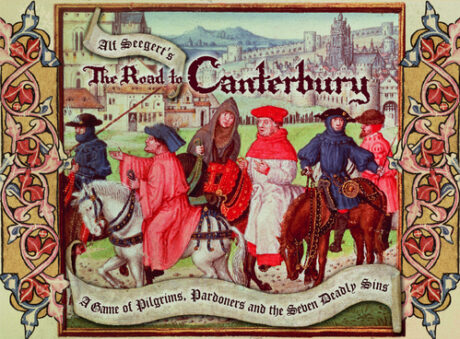
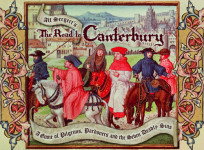

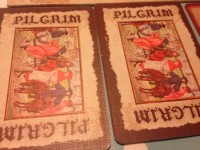
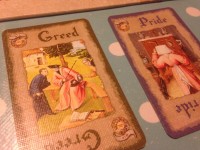
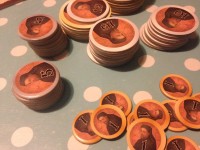
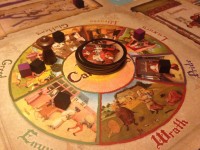


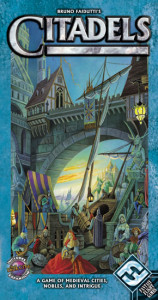
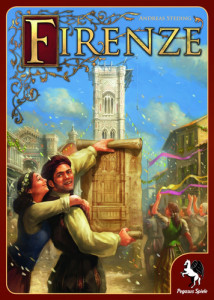
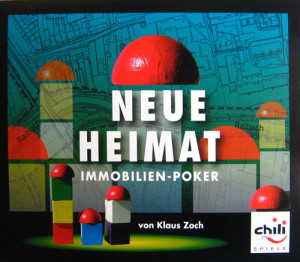
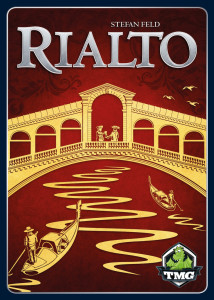
Sam says
There is a lot of room for chicanery here, and it's not just the theme that may put of the faint-hearted. Beware of pardoners! They're never what they seem. I think The Road to Canterbury is good, nasty fun, cleverly constructed and for the right group of players, the feisty play with the Bosch artwork will be a hit.